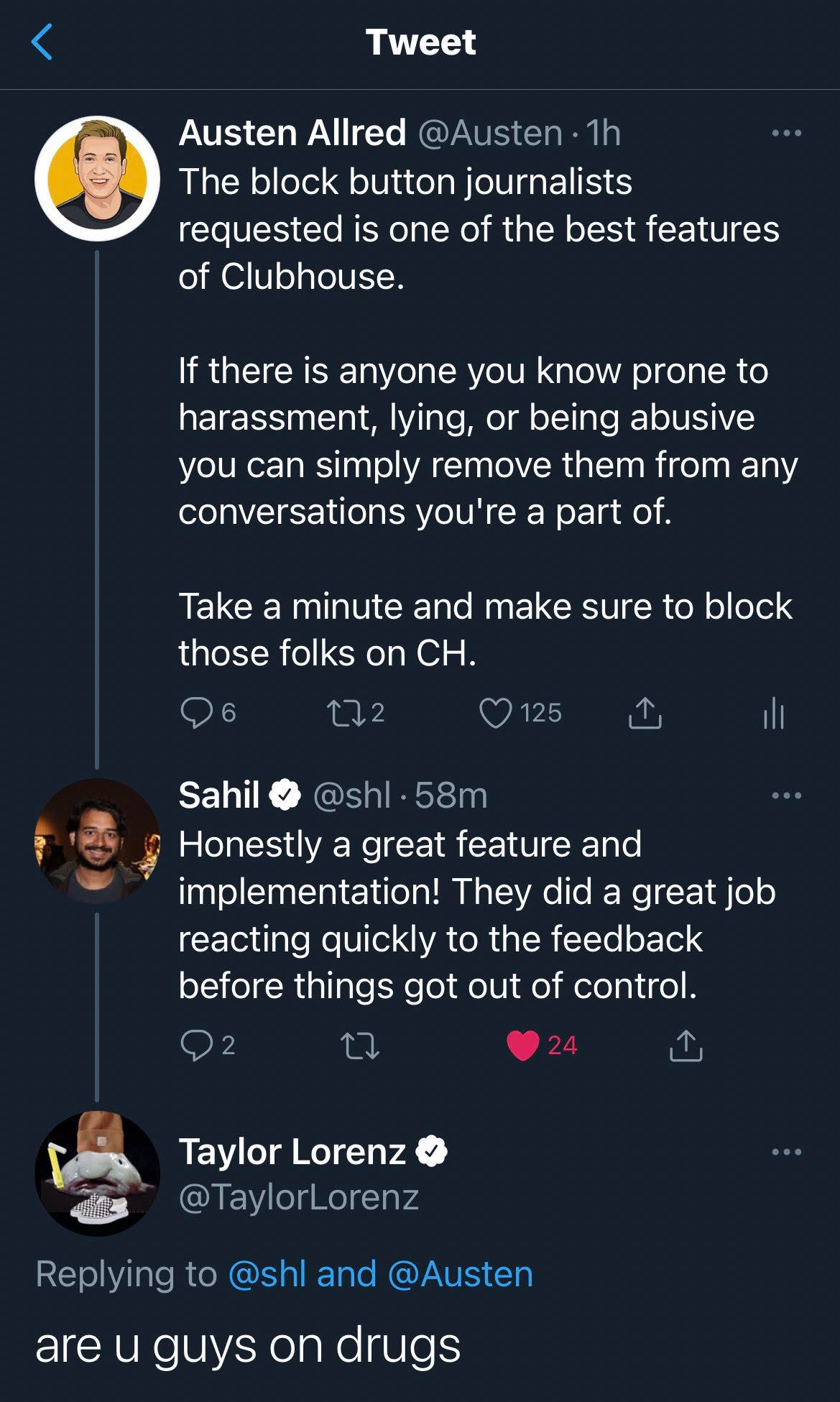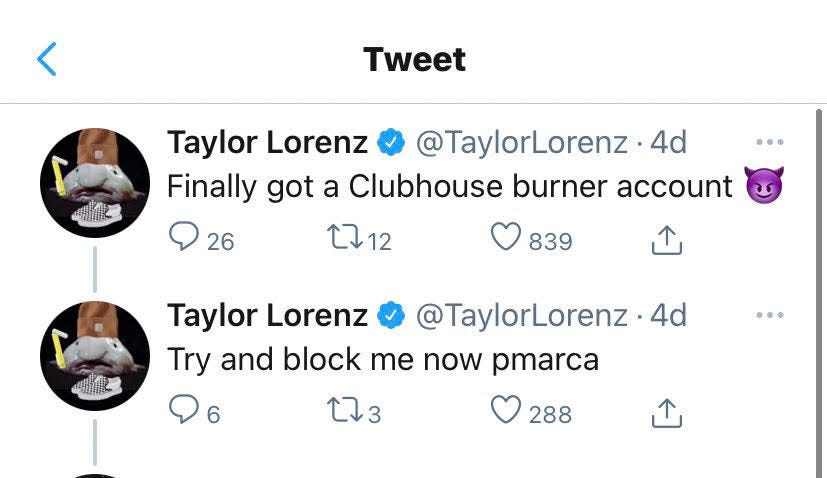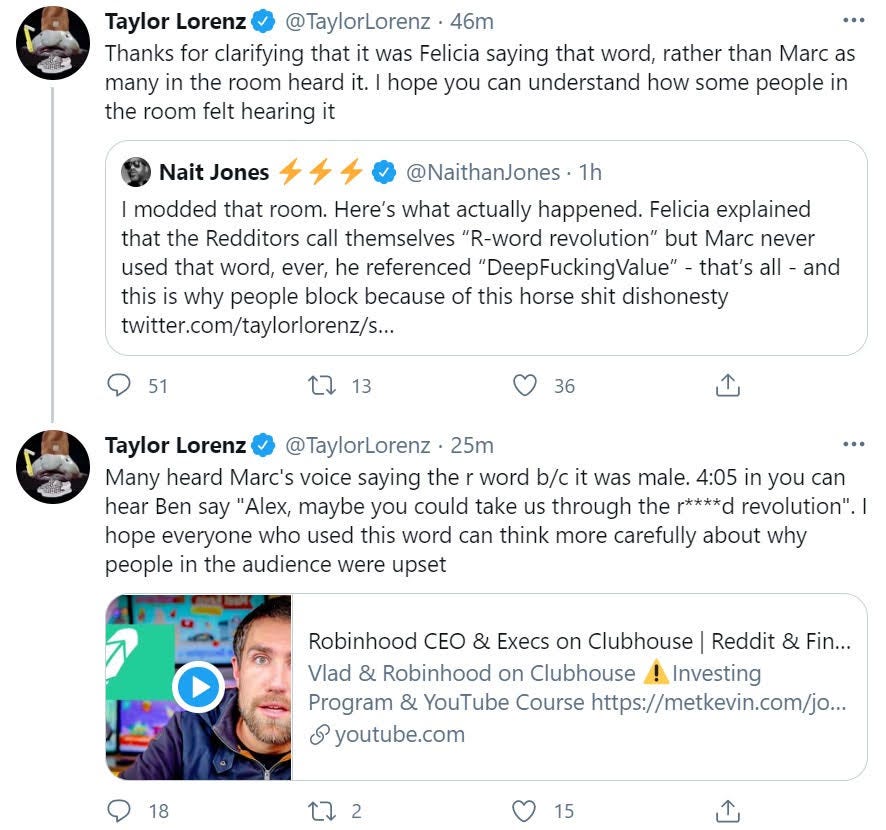Taylor Lorenz, an AG Sulzberger Production
If you’ve heard wind of NYT reporter Taylor Lorenz and some recent twitter drama, this is the TLDR explainer for you. While the dustup is only a flashpoint in the ongoing conflict between the tech industry and legacy news media, it’s a telling one.
My ultimate interest here though is not so much in Taylor personally. It’s in the New York Times Company itself — the institution so consumed with being the Netflix of news that it refuses to acknowledge the costs and tradeoffs inherent in that ambition.
But for those larger points to have much weight, we have to be clear about what exactly Taylor is guilty of (i.e., what the NYT has so far not only turned a blind eye toward, but directly incentivized).
Note: We reward corrections. See something wrong/misleading? Say something. It helps!
Story Summary
The story to date in bullet form, starting with important background context:
Historical Context
(This section is adapted from this prior reporting. I’m leaving a lot out here for brevity.)
The Verge wrote a negative story back in December 2019 about tech CEO Steph Korey and the culture she’d established at her startup Away.
Korey felt the story was unfair, and took to Instagram in July to post a theory as to why female founders get disproportionately targeted by negative journalism (a real phenomenon, separate from whether her theory was either fully correct or relevant to her own case).
NYT reporter Taylor Lorenz took exception and wrote a mean tweet about Korey.
Silicon Valley personality Balaji Srinivasan took exception on Korey’s behalf and posted his own mean tweet that directly parodied Taylor’s language.
Taylor complained that Balaji had been both publicly and privately attacking her for months. (The public part is a wilful and wild exaggeration, and I was unable to get any corroboration of the private part, including from Taylor.) But as part of her complaint she shared an edited screencap of Balaji’s tweet with its context stripped, the effect of which was prejudicial in a way that someone who writes about social technology usage for a living would intimately understand.
Later that same night they both joined a group call on the audio chat app Clubhouse. Soon after Balaji joined, Taylor left. She then later took to Twitter with claims about participants effectively meangirling her in her absence.
VICE then published a purported substantiation of Taylor’s complaint, in the form of a leaked recording. But they framed said audio in deeply misleading ways, divorcing multiple quotes from their context and otherwise taking incredible liberties with their interpretations. (Their headline was “Silicon Valley Elite Discuss Journalists Having Too Much Power in Private App”, when over half of the speaking time was taken up by current/ former journalists/editors.)
Many prominent journalists (including Taylor) commented on VICE’s piece with takes that likewise reflected either a total ignorance of what the audio contained or outlandish misrepresentations thereof — the effect of which was to drag both the Clubhouse community and the app’s leadership for allowing/enabling toxicity and harassment despite the call definitively not supporting any of those claims.
No journalists involved were subjected to any discipline that I’m aware of, which left of folks in tech with a sense of “well if they can get away with something so explicitly wrong, what’s even the point of engaging anymore”.
Recent Events
(Note: My screencaps of Taylor’s tweets here were all posted by others on Twitter. She blocked me last July and reportedly turned her account private last night.)
Clubhouse, contrary to Vice’s take, has always taken abuse seriously. And one policy developed in the aftermath was a blocking function where the blockee is no longer able to access any “rooms” where the blocker is on the speaker roster.
Unsurprisingly, Taylor was blocked on Clubhouse by many tech folks, including Marc Andreessen (co-founder of venture capital firm A16Z, a major Clubhouse investor). And this had the practical effect of locking Taylor out of some of the more popular rooms, which she very clearly wanted to be in.
Though Taylor is a prolific Twitter blocker herself, she took great umbrage to this (as did other journalists on her behalf), perceiving some difference between a 1-to-1 block and being effectively barred from observing “public” conversations (even though the app is still invite-only, and specific journalists not being invited to a dinner party is hardly some abridgement of fundamental press freedoms).
On February 2nd, Taylor publicly announced her intent to circumvent the system so as to join rooms she was specifically blocked from:
This then brings us to last night:
But not only had Marc not done that, the person who had was invoking the name of a Reddit phenomenon. (It seems from context that Felicia Horowitz, the room’s host, had at some prior point established that “re**rd revolution” was how Reddit’s r/wallstreetbets community described themselves, after which her husband Ben asked another call participant “maybe you can take us through the re**rd revolution”. So it was less the open and unopposed use of a slur and more a group of people interpreting language through a shared context, where maybe they should have been more circumspect, but where there’s hardly much scandal, and where Taylor’s accounting of it is so hyperbolic as to be disqualifying.)
Many pointed out to Taylor that it wasn’t Marc, to which she replied with:
The thing about that video though (link to relevant part here) is that it demonstrates how the Clubhouse UI shows who’s speaking! So her “many heard” equivocations are rather Trumpian, in that anyone inclined to double-check the speaker’s identity could have done so by just looking at their screen. (Of course though, the parsimonious take here is that no one else bothered, likely because they were tuned in for the context-setting of the comment in question.)
In sum, someone with a personal vendetta against Marc and Clubhouse once again went alarmist with lazy mistruths in an attempt to justify both her anti-tech stance and her circumvention of a well-deserved block. And when she was called out for that, she opted against making right and instead presented an unmoored defense and then deleted the tweets and took her Twitter private.
So that’s what got us here. But as I say, this isn’t itself the real story. Yes, sure, Taylor is a notoriously unreliable narrator, which is a pretty, uh, not great quality for a reporter. But she’s ultimately a product of a system, and it’s the system we ought to focus on.
And the man most responsible for perpetuating that system is NYT publisher and controlling stakeholder AG Sulzberger.
The New York Times Company
An illuminating quote from one of the reporters that tried to warn the NYT brass of the many problems with Rukmini Callimachi and her infamous Caliphate reporting:
You discouraged people from using the fire alarm, and when some of us did use the fire alarm anyhow, we found the alarm was not connected to anything.
I’ve written before about the preposterously difficult task of getting the NYT to correct anything (and their bananas policy on ninja-editing some corrections without comment). It doesn’t seem unreasonable to expect better from an $8.5bn market cap corporation with such an influential position in the journalism ecosystem. But in talking to folks at the NYT (many of whom are lovely and great at what they do), the sense I get is that many have kinda just given up on structural reform. They too have found that fire alarms aren’t connected to anything, and that feedback channels only work when they reach mob levels of outrage and coordination. So the good ones mostly seem to just focus on making sure their own work is to the highest standard that their publishing structure allows, not feeling able to control much else.
It’s a predictable outcome really. In the same way that behavior tends to follow incentives, institutional ethics tend to follow economic models. The Sulzberger family (who have effective board control) would like for the NYT to be worth quite a lot of money, and have thus chosen to make the NYT a volume-heavy attention mill, where the resulting quest for scale makes quality control structurally impossible.
(I do think the NYT produces some truly excellent journalism. The problem is all the journalism that isn’t so, and how it feeds disinformation and distrust. And when you focus relentlessly on volume you get a lot more of one than the other.)
Well, if I’m a reporter who shares those ethics (i.e., the maximization of brand and income over the spread of useful knowledge), I’ll want to work for the NYT because:
It’s a great way to boost one’s own brand / grow one’s social followings (which can then be used later as a springboard into Substack etc)
I’ll be given the freedom to write whatever I want with little to no chance of professional repercussions until I do so something so unambigiously and notoriously bad that a Twitter mob creates sufficient uproar
Now, it isn’t that most NYT applicants are inspired by that kind of thinking. But a high percentage of the Rukmini Callimachis and Taylor Lorenzes of the world certainly are. And when the others see what they get away with, it will have predictable effects. Some will follow suit, and objectors will be left to test their commitment to pulling fire alarms that don’t produce a meaningful sound.
This isn’t some inevitable outcome though. It’s the product of a set of choices, the current result of which is that media trust has collapsed and people don’t know where to go for neutral, authoritative explanations anymore. And this in turn has profound socioeconomic consequences that are incandescent in their clarity at this point.
But do we care?
That’s not entirely a rhetorical question, especially if your last name is Sulzberger.
PS - If you want to get involved in creating something better, see the final section here.







